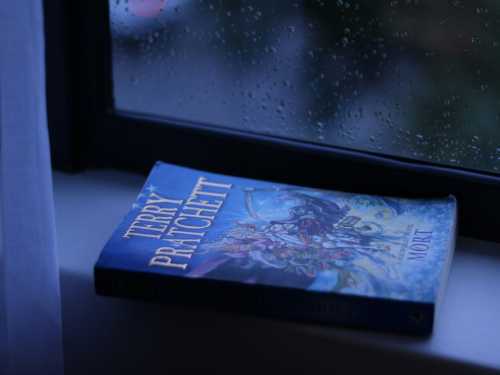
Save this storySave this storySave this storySave this story
One of the delights of critiquing films is observing a veteran director’s creative blossoming, exemplified by Kelly Reichardt. A dedicated filmmaker with a firm worldview, she once shunned artifice and flamboyance as if they were transgressions, tailoring her style to harmonize with the perspectives she portrayed in each picture. Yet, with “Showing Up,” from 2022, she unveiled, for the first time, unbounded cinematic pleasure, an open fondness for inventive observation and superfluous beauty. This might be intentional, considering the movie centers on two artists—one working on a small scale and exquisitely, the other on a grand scale and ostentatiously—and it justly praises both. Now, with a fresh picture, “The Mastermind,” Reichardt pushes considerably further in numerous aspects—narrative, visual, regional, chronological, and moral. It’s among the most unrestrained genre re-imaginings and even among the most subtly distinctive subversions of film storytelling that I’ve encountered recently. Furthermore, the needless is its very theme.
“The Mastermind” is yet another story rooted in the art sphere—in a way. It unfolds in 1970, mainly in Framingham, Massachusetts, where James Blaine Mooney (Josh O’Connor), known as J.B., is an unfulfilled artist—a woodworker who’s unemployed, possibly due to his overblown view of his own skill. He resides with his spouse, Terri (Alana Haim), the family’s provider, who toils at a typewriter in an office, and their two peculiar sons, roughly between nine and eleven, Tommy (Jasper Thompson) and Carl (Sterling Thompson). One day, as the family explores the (imaginary) Framingham Museum of Art, J.B. discovers a chance for his idle hands. Spotting a guard dozing, he unlocks a display case and pilfers a statuette, concealing it in an eyeglasses case that he slips into Terri’s purse.
Subsequently, seeking to fill his time and expend excess energy, J.B. enlists a few associates—the shaggy-haired and easygoing Guy (Eli Gelb), the anxious and direct Larry (Cole Doman), and the headstrong Ronnie (Javion Allen)—to lift paintings from the museum. Even before the robbers step inside, “The Mastermind” emerges as an instant heist classic. Reichardt’s precise depiction of the scheme, destined for calamity, is simultaneously terribly poignant and absurdly amusing. Terri crafts large cloth bags to accommodate the paintings, and J.B. showcases his carpentry talents to build a sectioned box for storing the stolen items. Larry steals a vehicle for the escape; Guy positions another to confuse pursuers; J.B. glances behind a painting to observe its hanging method and, to advise his accomplices on which artworks to seize, creates sketches that reveal a gift being tragically squandered. Reichardt’s meticulous focus on the specifics of art theft conveys genuine fascination tinged with the ominous sense inherent in J.B.’s efforts to foresee potential pitfalls.
Wish him luck. Reichardt also delights in the incidents of things going awry: a locked car door that resists opening; a schoolgirl (Margot Anderson-Song) donning a beret, who unexpectedly appears in the museum during the robbery, reciting lines from a classical French drama; a parking area that morphs into a mundane ordeal of hindrances and surveillance; and eventually, the robbers even confront the danger posed by what could be labeled a competing gang. As the heist’s careful preparations give way to disoriented improvisation, Reichardt’s awareness of the inherent randomness in collaborative endeavors—an idea that, in essence, carries political weight—exceeds Paul Thomas Anderson’s concentration on a revolutionary group’s strategies and risks in “One Battle After Another.”
The picture’s action sequences are grounded on an odd and original societal base. As the offspring of a respected local family, J.B. is a source of disappointment to his father, Bill (Bill Camp), and a puzzle—albeit an adored one—to his mother, Sarah (Hope Davis). Their elevated standing grants him notable advantages, which surprisingly feature prominently in the narrative. Here, as well, Reichardt meticulously constructs a framework of connection and consequence that generates a variety of outcomes—some meticulously planned, others darkly ironic—and which I would not dream of revealing.
“The Mastermind” is so full of narrative surprises that, when discussing it, I’m particularly cautious about revealing key plot points. It delivers the satisfaction of being caught unawares by both significant developments and minor details whose striking novelty warrants discussion but that viewers should encounter without prior knowledge. A heist typically plays out in three stages—planning, execution, and escape—and in “The Mastermind,” each phase is strikingly unique in atmosphere and execution, with conclusions that are startling in both pragmatic and emotional terms. The most fitting approach to convey the pleasure is to share a few details while bypassing their precise placement in the storyline and going straight to the dominant concept that ties them together. One of Reichardt’s most brilliant strokes is to weave in a backdrop of political upheaval involving the Vietnam War and its effects on American society—news coverage, demonstrations and objections, reactionary viewpoints, and police crackdowns—and to weave into the story as inescapable components of daily existence.
The varied performances are understated yet profoundly expressive; Reichardt’s dialogue possesses an enticingly strange twist (beginning with a clever soliloquy for an advanced young character), and the actors deliver it with impeccable inflection. The period styling is striking and evocative: the family’s vivid-green Volkswagen Beetle; J.B.’s casual attire of boxer shorts, socks, and a long-sleeved shirt; the plastic pouch used to deliver the morning newspaper onto the driveway. At dinner with J.B., Terri, and their boys, Davis’s Sarah steals the scene with a single action—picking up an ear of corn, snapping it in half, and contrasting the lengths of the pieces before settling on one. Yet, such everyday joys are regularly disrupted by the news: while J.B. and a son engage in a checkers match on the floor, the television resounds with reports of student protests and their violent repression. At one juncture, the anchorman Walter Cronkite makes an appearance on a neighbor’s television, reporting on the expansion of the conflict to Cambodia; later, the sounds of battle reverberate from a TV documentary that J.B. is absorbed in. There’s a modest protest in the streets of Framingham, and a larger one elsewhere. In Reichardt’s clear-eyed methodology, these larger events permeate not only the mood of the picture but also the very fiber of J.B.’s ill-fated undertaking.
Despite the movie being infused with the major political crisis of that period, J.B. himself shows no political leaning and seems detached from its broader conflicts. He’s likely in his early thirties, sporting shoulder-length hair and a ragged beard, but doesn’t belong to the young generation—probably a pre-war child reaching adulthood during the post-war economic boom, his formative years spanning between the Korean and Vietnam Wars. Still, even without expressing any dissent, J.B. embodies a spirit of total rebellion and demonstrates his desperation through his recklessness. There’s an amazing moment in “The Mastermind” that, in a fleeting instance, encapsulates the irreconcilable contradiction at its essence. While plotting the heist, J.B. peers out of a window and notices, across the way, a house similar to his own, with an ordinary-looking family outside, busily going about their day cheerfully. He observes everything he lacks—starting with a place to be in the mornings, something to fill his day, and the funds and belonging that accompany it. He also sees the way of life that, by plunging into a life of crime, he will forever be shut out of. The untamed and bitter core of “The Mastermind” lies in J.B.’s self-inflicted banishment from the regular rhythm of suburban existence—from a normalcy that he can only mimic. In this sense, it owes a debt to Elaine May’s “The Heartbreak Kid.”
The heist materializes as an acte gratuit—André Gide’s description for an act whose lack of motivation serves as a declaration of independence—and sparks the existential journey of a fugitive on the run. Thus, “The Mastermind” evolves into a classic film noir, filled with the seedy characteristics of secrecy and solitude, panicked searches for safe havens, and attempts to erase identity. This also aligns with the era’s politics, considering Canada’s allure for draft evaders and the hazards encountered by resisters who remained. (I would be remiss in not highlighting the perceptive and passionate performances by Gaby Hoffmann and John Magaro, as J.B.’s longtime allies with ties to that world.) Reichardt emphasizes the extremity of the action through a remarkably innovative method of cinematic storytelling that, in a more conventional drama, might appear as a simplistic sidestep. She subtly underplays the connective links of motivations, acknowledgments, insights, and revelations. Backstory is minimal, yet telling. Relationships, even the most profoundly intimate ones, are treated as established facts, self-contained secrets. Events of little consequence receive the same level of attention and prominence as pivotal ones, leading actions—starting with the most significant of all, the heist—to come across as both random and predetermined.
Rather than employing traditional character psychology, “The Mastermind” provides cinematic immersions in the present moment—and Reichardt further fashions a distinctive visual language to achieve this. The picture boasts numerous extended takes that owe little to theatrical flow and instead underscore the action’s inescapable and demanding physicality. (The shimmering and booming of Rob Mazurek’s jazz score elevates both the nervous energy and the subjective intensity.) Stealing a vehicle—what’s the feeling? Observe the thief from start to finish, forcing the lock with a wire hanger, bypassing the ignition; then the camera remains focused on him after the act, while he’s simply driving. How to conceal paintings? J.B.’s furtive nocturnal quest to deposit them in a hidden yet precarious location transforms balletic mayhem akin to Jacques Tati into clumsy struggles that amplify in absurdity as they unfold in continuous time. Reichardt’s approach to such scenes elicits not mastery or even revelation, but bewilderment, as if she herself is taken aback by the figures and happenings she portrays on screen. She can only express disbelief at J.B., but she directs it with greater force toward the world. ♦
Sourse: newyorker.com






